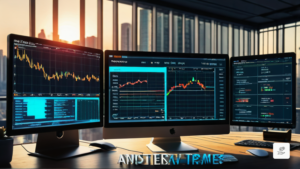Deciphering Trading Goals: Blue Sentinel vs. BackedUp (Celestial)

Unraveling the Trading Objectives
Understanding the nuances and disparities in trading objectives between Blue Sentinel and BackedUp (Celestial) is imperative for traders navigating the waters of the prop trading realm. This analysis unveils the intricacies of how these two entities converge and diverge in their aims.
Comparison of Core Trading Goals
Let’s delve into a comprehensive comparison of their primary trading objectives:
– Phase 1 Profit Goal: Both firms aim for an 8% profit target during Phase 1.
– Phase 2 Profit Goal: Blue Sentinel sets a 4% target, while BackedUp (Celestial) aims for 5%.
– Maximum Daily Drawdown: Blue Sentinel caps daily losses at 4%, whereas BackedUp (Celestial) maintains it at 5%.
– Maximum Loss Threshold: Both adhere to a 10% maximum loss threshold.
– Minimum Trading Duration: Each firm mandates a minimum of 5 calendar days for trading.
– Maximum Trading Duration: Both entities offer unlimited trading periods across all phases.
– Profit Division: Blue Sentinel ensures an unwavering 85% profit split, whereas BackedUp (Celestial) provides a variable split ranging from 80% to 90%.
Synopsis of Variances
Uprofit Key Trading Objectives

- Understand the nuances of business objectives
- Comparison of Phase 1 profit targets
- Comparison of Phase 2 profit targets
- Comparison of daily reduction limits
- Variations in the distribution of profits between companies
While Blue Sentinel and BackedUp (Celestial) may share resemblances in Phase 1 profit targets and maximum loss thresholds, disparities emerge in Phase 2 profit goals and daily drawdown limits. Furthermore, Blue Sentinel maintains a consistent profit split, diverging from the fluctuating range offered by BackedUp (Celestial). These distinctions wield significance for traders crafting strategies aligned with their objectives, particularly within the dynamic landscape of forex-funded initiatives.






